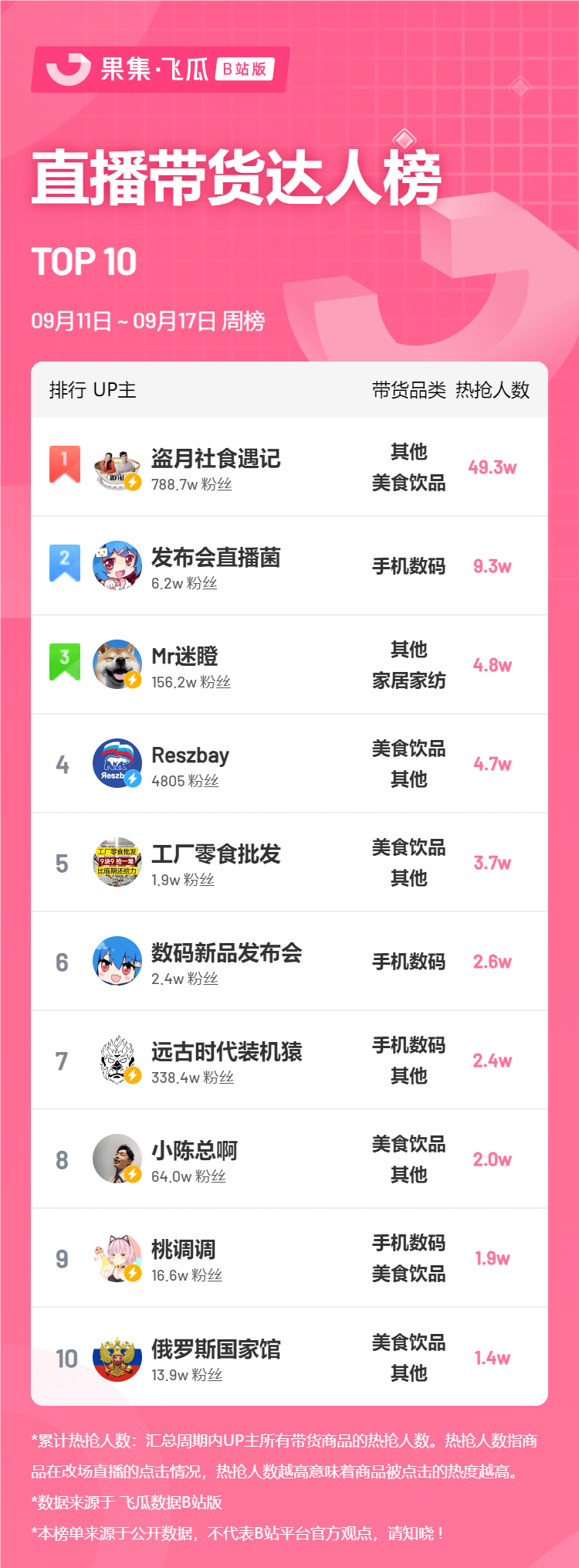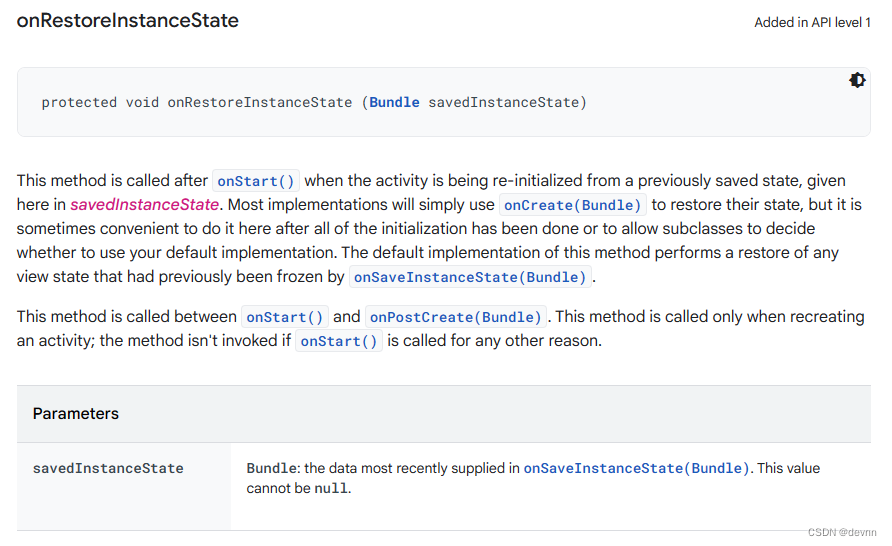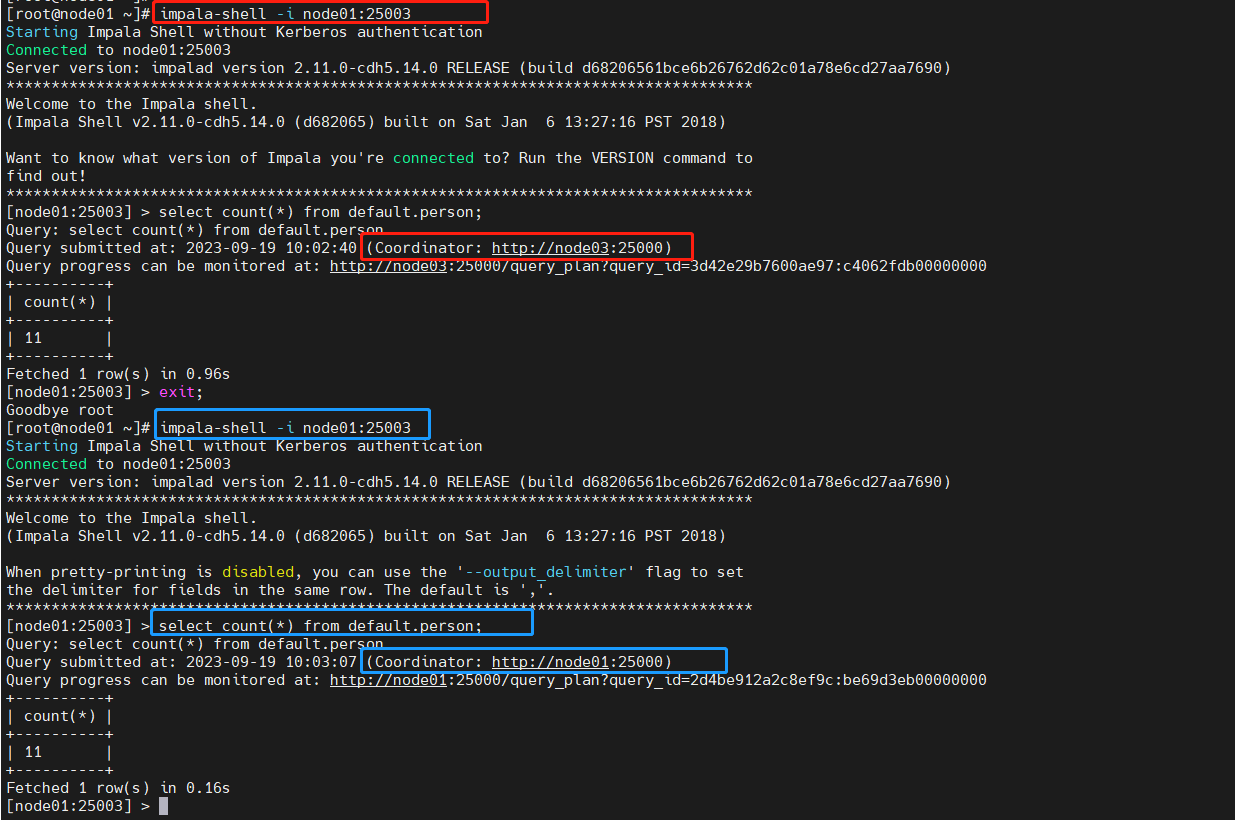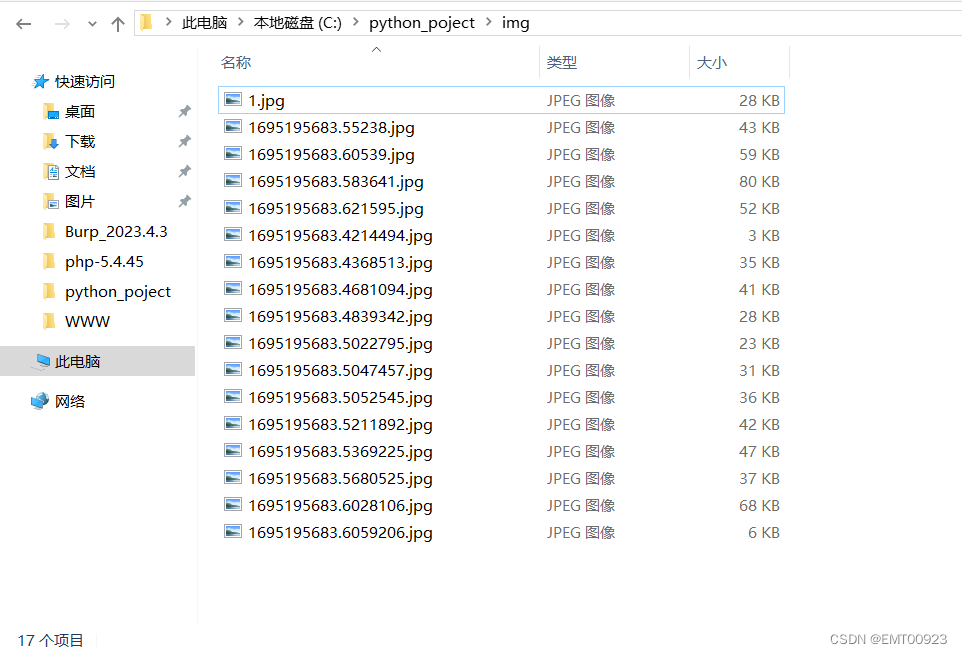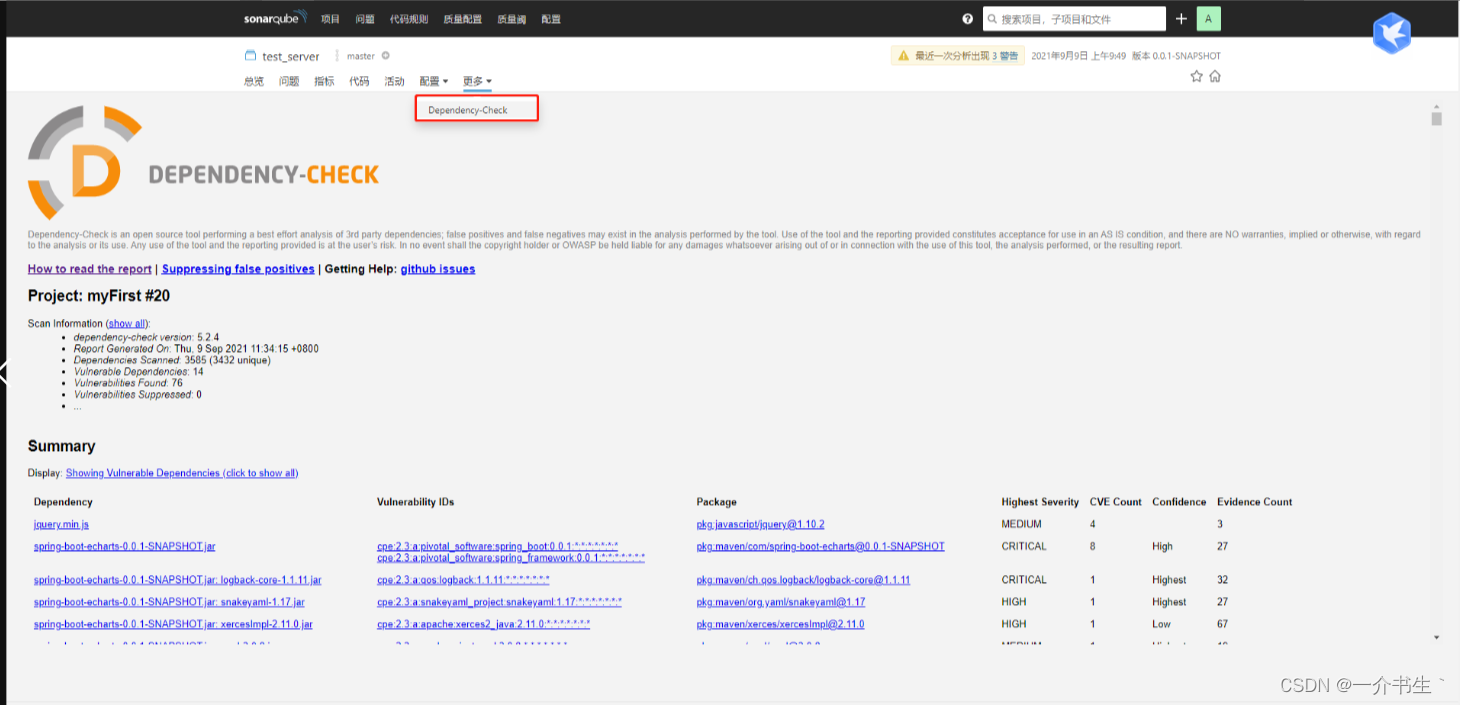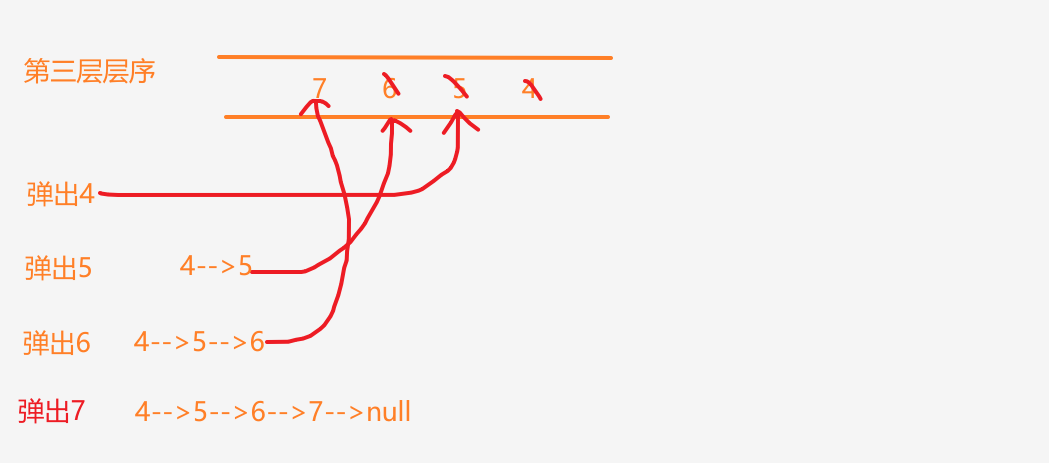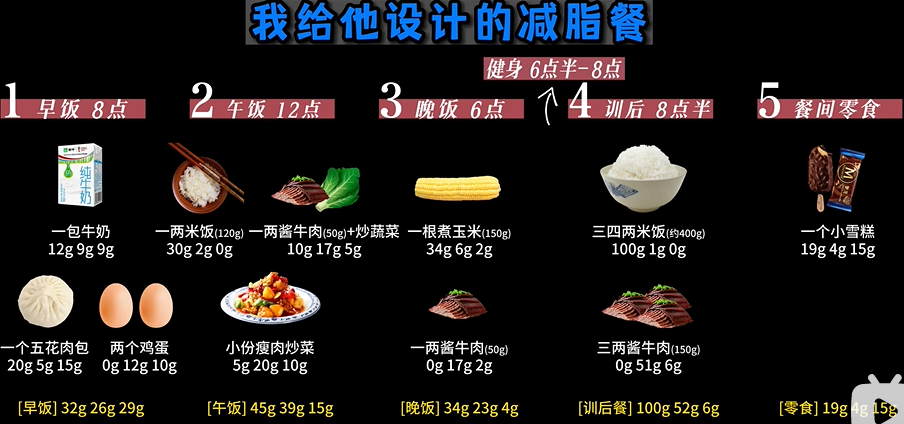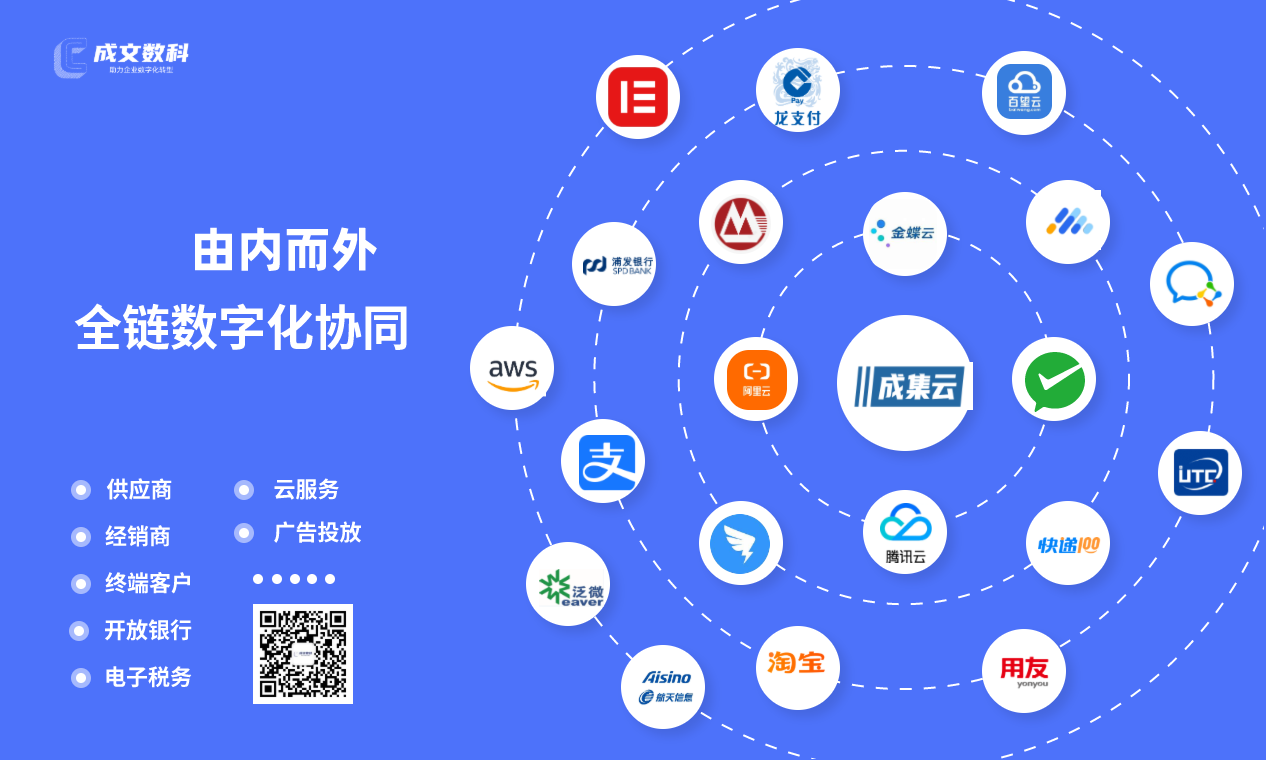invokeBeanFactoryPostProcessors
前言
AbstractApplicationContext类的refresh方法是spring实例化流程的开始。本章主要是介绍invokeBeanFactoryPostProcessors(beanFactory)方法,对其内部源码进行详细分析。接下来就来看看这句简单的代码后面具体做了什么。Spring源码版本6.0.12,代码版本不同可能代码会稍有不同,但是核心逻辑大差不差。
分析前的准备
接下来就直接从代码开始进行源码分析。源码的分析将会非常枯燥、并且常看常新。本章除了记录自己的源码学习内容,也希望能给大家带来帮助。
spring启动main方法,在调用refresh之前会register(AopConfig.class),这个是前提。
public static void main(String[] args) {
AnnotationConfigApplicationContext annotationConfigApplicationContext =
new AnnotationConfigApplicationContext(AopConfig.class);
}
AopConfig类其实可以是任意类,我只是为了加上@ComponentScan注解
@EnableAspectJAutoProxy
@ComponentScan(value = {"com.qhyu.cloud.**"})
public class AopConfig {
}
invokeBeanFactoryPostProcessors
Instantiate and invoke all registered BeanFactoryPostProcessor beans,respecting explicit order if given.
实例化并调用所有已注册的 BeanFactoryPostProcessor beans,如果给定的话,请遵守显式顺序。次方法就在AbstractApplicationContext中。
protected void invokeBeanFactoryPostProcessors(ConfigurableListableBeanFactory beanFactory) {
// 核心方法
PostProcessorRegistrationDelegate.invokeBeanFactoryPostProcessors(beanFactory, getBeanFactoryPostProcessors());
// Detect a LoadTimeWeaver and prepare for weaving, if found in the meantime
// (e.g. through an @Bean method registered by ConfigurationClassPostProcessor)
if (!NativeDetector.inNativeImage() && beanFactory.getTempClassLoader() == null && beanFactory.containsBean(LOAD_TIME_WEAVER_BEAN_NAME)) {
beanFactory.addBeanPostProcessor(new LoadTimeWeaverAwareProcessor(beanFactory));
beanFactory.setTempClassLoader(new ContextTypeMatchClassLoader(beanFactory.getBeanClassLoader()));
}
}
PostProcessorRegistrationDelegate.invokeBeanFactoryPostProcessors(beanFactory, getBeanFactoryPostProcessors())是核心的方法,本以为getBeanFactoryPostProcessors()方法会获取到所有的BeanFactoryPostProcessors,毕竟看起来名字很像,但是打断点发现其实此处返回的List size为0。
那么接下来就直接查看invokeBeanFactoryPostProcessors(beanFactory, getBeanFactoryPostProcessors())方法。
BeanFactoryPostProcessor
在spring的实例化过程中我们可以经常看到BeanFactoryPostProcessor接口,几乎充斥着整个实例化过程。BeanDefinitionRegistryPostProcessor也是spring框架中一个比较重要的接口。因为BeanDefinitionRegistryPostProcessor继承了BeanFactoryPostProcessor,所以就放一起来讲解了。
- BeanFacotryPostProcessor
BeanFactoryPostProcessor是一个接口,用于在Spring容器实例化任何Bean之前修改BeanDefinition(Bean定义)或配置的后置处理器,它允许对BeanDefinition进行修改、添加自定义属性甚至可以完全替换beanDefinition。
关键点:
1、在spring容器加载BeanDefinition后,但在实例化Bean之前调用。
2、用于修改BeanDefinition的元数据(如类名、作用域、属性等)。
3、对所有的BeanDefinition生效,包括非延迟加载和延迟加载的bean。
4、可以通过实现BeanFactoryPostProcessor接口并注册为Spring容器的Bean来自定义处理逻辑。
示例:
public class CustomBeanFactoryPostProcessor implements BeanFactoryPostProcessor {
@Override
public void postProcessBeanFactory(ConfigurableListableBeanFactory beanFactory) throws BeansException {
// 在这里进行Bean定义的修改或自定义处理逻辑
}
}
- BeanDefinitionRegistryPostProcessor
BeanDefinitionRegistryPostProcessor是BeanFacotryPostProcessor的子接口,用于在Spring容器实例化任何Bean之前修改Bean定义的后置处理器。与BeanFacotryPostProcessor相比,它提供了更广泛的功能,包括添加、修改和删除Bean定义。
关键点:
1、继承自BeanFactoryPostProcessor接口,扩展了修改Bean定义的功能。
2、在Spring容器加载Bean定义后,但在实例化Bean之前调用。
3、用于直接操作Bean定义的注册表,可以添加、修改和删除Bean定义。
4、可以通过实现BeanDefinitionRegistryPostProcessor接口并注册为Spring容器的Bean来自定义处理逻辑。
示例:
public class CustomBeanDefinitionRegistryPostProcessor implements BeanDefinitionRegistryPostProcessor {
@Override
public void postProcessBeanDefinitionRegistry(BeanDefinitionRegistry registry) throws BeansException {
// 在这里进行Bean定义的添加、修改或删除操作
}
@Override
public void postProcessBeanFactory(ConfigurableListableBeanFactory beanFactory) throws BeansException {
// 可以不实现该方法,或者在这里进行其他的BeanFactoryPostProcessor的处理逻辑
}
}
关系和使用区别:
- BeanDefinitionRegistryPostProcessor是BeanFactoryPostProcessor的子接口,它们都用于在实例化Bean之前修改Bean定义。
- BeanDefinitionRegistryPostProcessor在功能上更加强大,可以添加、修改和删除Bean定义,而BeanFactoryPostProcessor只能修改Bean定义的元数据。
- BeanDefinitionRegistryPostProcessor在处理Bean定义之前,会先回调BeanFactoryPostProcessor的方法,因此它们可以一起使用,但是顺序上有所区别。
- BeanDefinitionRegistryPostProcessor可以直接操作Bean定义注册表,而BeanFactoryPostProcessor只能通过ConfigurableListableBeanFactory来间接操作Bean定义。
- 通常情况下,更常用的是实现BeanFactoryPostProcessor接口,而BeanDefinitionRegistryPostProcessor在特定需求下使用,例如需要动态地添加或修改Bean定义。
PostProcessorRegistrationDelegate.invokeBeanFactoryPostProcessors
这里引入了一个新的类PostProcessorRegistrationDelegate。
invokeBeanFactoryPostProcessors方法的参数解释如下:
参数1:默认是DefaultListableBeanFactory,实现了BeanDefinitionRegistry
参数2:一般情况下为空,除非调用Spring容器的refresh方法之前调用API手动添加了BeanFactoryPostProcessor
public static void invokeBeanFactoryPostProcessors(
ConfigurableListableBeanFactory beanFactory, List<BeanFactoryPostProcessor> beanFactoryPostProcessors) {
// WARNING: Although it may appear that the body of this method can be easily
// refactored to avoid the use of multiple loops and multiple lists, the use
// of multiple lists and multiple passes over the names of processors is
// intentional. We must ensure that we honor the contracts for PriorityOrdered
// and Ordered processors. Specifically, we must NOT cause processors to be
// instantiated (via getBean() invocations) or registered in the ApplicationContext
// in the wrong order.
//
// Before submitting a pull request (PR) to change this method, please review the
// list of all declined PRs involving changes to PostProcessorRegistrationDelegate
// to ensure that your proposal does not result in a breaking change:
// https://github.com/spring-projects/spring-framework/issues?q=PostProcessorRegistrationDelegate+is%3Aclosed+label%3A%22status%3A+declined%22
// Invoke BeanDefinitionRegistryPostProcessors first, if any.
// 如果有的话,首先调用 BeanDefinitionRegistryPostProcessors
// 存放处理完毕的bfpp名称
Set<String> processedBeans = new HashSet<>();
// 因为默认传的DefaultListableBeanFactory==beanFactory实现了BeanDefinitionRegistry接口,所以进入if的逻辑
if (beanFactory instanceof BeanDefinitionRegistry) {
// 也就是说这个if里面要使用的就是BeanDefinitionRegistry的特性。
BeanDefinitionRegistry registry = (BeanDefinitionRegistry) beanFactory;
// regular常规的意思
// regularPostProcessors记录通过硬编码方式注册的BeanFactoryPostProcessor类型的处理器
// 存放直接实现了BeanFactoryPostProcessor接口的实现类集合,bfpp的作用是可以定制化修改bd
List<BeanFactoryPostProcessor> regularPostProcessors = new ArrayList<>();
// registryProcessors记录通过硬编码方式注册是BeanDefinitionRegistryPostProcessor
// 存放直接实现了BeanDefinitionRegistryPostProcessor接口实现类的集合,brpp可以定制化修改bd
List<BeanDefinitionRegistryPostProcessor> registryProcessors = new ArrayList<>();
// 除非手动注入bfpp 否则这个for循环没有什么意义,也就是AnnotationConfigApplicationContext.addBeanFactoryPostProcessor
// 此处可以作为扩展。AnnotationConfigApplicationContext.addBeanFactoryPostProcessor
for (BeanFactoryPostProcessor postProcessor : beanFactoryPostProcessors) {
if (postProcessor instanceof BeanDefinitionRegistryPostProcessor) {
BeanDefinitionRegistryPostProcessor registryProcessor =
(BeanDefinitionRegistryPostProcessor) postProcessor;
registryProcessor.postProcessBeanDefinitionRegistry(registry);
registryProcessors.add(registryProcessor);
}
else {
regularPostProcessors.add(postProcessor);
}
}
// Do not initialize FactoryBeans here: We need to leave all regular beans
// uninitialized to let the bean factory post-processors apply to them!
// Separate between BeanDefinitionRegistryPostProcessors that implement
// PriorityOrdered, Ordered, and the rest.
// currentRegistryProcessors记录通过配置方式注册的BeanDefinitionRegistryPostProcessor类型的处理器
// 用于存放当前即将执行BeanDefinitionRegistryPostProcessor实现类
List<BeanDefinitionRegistryPostProcessor> currentRegistryProcessors = new ArrayList<>();
// First, invoke the BeanDefinitionRegistryPostProcessors that implement PriorityOrdered.
// 第一次调用:首先调用实现了排序的BeanDefinitionRegistryPostProcessors
// 这里这个方法多次调用返回不同的值是因为beanFactory中的BeanDefinitionRegistryPostProcessors的新增,一开始都想不明白。
// 其实最主要的就是第一次执行了invokeBeanDefinitionRegistryPostProcessor方法
// 真实逻辑就是ConfigurationClassPostProcessor的postProcessBeanDefinitionRegistry方法,
// 这里会根据我们的AopConfig,也就是@ComponentScan注解的path来扫描我们自己的类,并且生产BeanDefiniton信息
String[] postProcessorNames =
beanFactory.getBeanNamesForType(BeanDefinitionRegistryPostProcessor.class, true, false);
for (String ppName : postProcessorNames) {
if (beanFactory.isTypeMatch(ppName, PriorityOrdered.class)) {
currentRegistryProcessors.add(beanFactory.getBean(ppName, BeanDefinitionRegistryPostProcessor.class));
processedBeans.add(ppName);
}
}
// 很明显 这里是排序,先不进去看,因为此时currentRegistryProcessors只有一个ConfigurationClassPostProcessor
sortPostProcessors(currentRegistryProcessors, beanFactory);
registryProcessors.addAll(currentRegistryProcessors);
// 这个方法就是核心内容,我这个工程使用了AOPConfig启动类,也就是说一开始会解析这个类,包含类上的ComponentScan注解,会把路径下的东西用ClassPathBeanDefinitionScanner来扫描出来
// 生成beanDefinition放入BeanFactory(DefaultListableBeanFactory),所以第二次调用的时候就可以扫描出其他的BeanFactoryPostProcessors
// ConfigurationClassPostProcessor == currentRegistryProcessors
invokeBeanDefinitionRegistryPostProcessors(currentRegistryProcessors, registry, beanFactory.getApplicationStartup());
// 清空当前注册的BeanDefinitionRegistryPostProcessors
currentRegistryProcessors.clear();
// Next, invoke the BeanDefinitionRegistryPostProcessors that implement Ordered.
// 接下来,调用实现 Ordered 的 BeanDefinitionRegistryPostProcessors。
// 第二次调用:这个时候已经获取了ComponentScan注解中的路径下的BeanDefinition了。
// 所以会把我们定义的BeanDefinitionRegistryPostProcessor加载起来,或者第三方框架实现的BeanDefinitionRegistryPostProcessor加载
postProcessorNames = beanFactory.getBeanNamesForType(BeanDefinitionRegistryPostProcessor.class, true, false);
for (String ppName : postProcessorNames) {
if (!processedBeans.contains(ppName) && beanFactory.isTypeMatch(ppName, Ordered.class)) {
currentRegistryProcessors.add(beanFactory.getBean(ppName, BeanDefinitionRegistryPostProcessor.class));
processedBeans.add(ppName);
}
}
// 排序,看一下排序的规则是什么?,我可以实现Ordered接口PriorityOrdered接口或者注解
sortPostProcessors(currentRegistryProcessors, beanFactory);
registryProcessors.addAll(currentRegistryProcessors);
// 调用了currentRegistryProcessors中的BeanDefinitionRegistryPostProcessors--》postProcessBeanDefinitionRegistry方法
// 因为BeanDefinitionRegistryPostProcessor的职责就是加载Bean的BeanDefinition,后续才好加载这个bean,至于要修改的话,交给BeanFactoryPostProcessor
invokeBeanDefinitionRegistryPostProcessors(currentRegistryProcessors, registry, beanFactory.getApplicationStartup());
currentRegistryProcessors.clear();
// Finally, invoke all other BeanDefinitionRegistryPostProcessors until no further ones appear.
// 最后,调用所有其他 BeanDefinitionRegistryPostProcessors 直到不再出现。
boolean reiterate = true;
while (reiterate) {
reiterate = false;
postProcessorNames = beanFactory.getBeanNamesForType(BeanDefinitionRegistryPostProcessor.class, true, false);
for (String ppName : postProcessorNames) {
if (!processedBeans.contains(ppName)) {
currentRegistryProcessors.add(beanFactory.getBean(ppName, BeanDefinitionRegistryPostProcessor.class));
processedBeans.add(ppName);
reiterate = true;
}
}
sortPostProcessors(currentRegistryProcessors, beanFactory);
registryProcessors.addAll(currentRegistryProcessors);
invokeBeanDefinitionRegistryPostProcessors(currentRegistryProcessors, registry, beanFactory.getApplicationStartup());
currentRegistryProcessors.clear();
}
// Now, invoke the postProcessBeanFactory callback of all processors handled so far.
invokeBeanFactoryPostProcessors(registryProcessors, beanFactory);
invokeBeanFactoryPostProcessors(regularPostProcessors, beanFactory);
}
else {
// Invoke factory processors registered with the context instance.
invokeBeanFactoryPostProcessors(beanFactoryPostProcessors, beanFactory);
}
/** =============下面就是处理BeanFactoryPostProcessor的实现类============= */
// Do not initialize FactoryBeans here: We need to leave all regular beans
// uninitialized to let the bean factory post-processors apply to them!
// 获取bfpp接口实现类
String[] postProcessorNames =
beanFactory.getBeanNamesForType(BeanFactoryPostProcessor.class, true, false);
// Separate between BeanFactoryPostProcessors that implement PriorityOrdered,
// Ordered, and the rest.
List<BeanFactoryPostProcessor> priorityOrderedPostProcessors = new ArrayList<>();
List<String> orderedPostProcessorNames = new ArrayList<>();
List<String> nonOrderedPostProcessorNames = new ArrayList<>();
for (String ppName : postProcessorNames) {
if (processedBeans.contains(ppName)) {
// skip - already processed in first phase above
}
else if (beanFactory.isTypeMatch(ppName, PriorityOrdered.class)) {
priorityOrderedPostProcessors.add(beanFactory.getBean(ppName, BeanFactoryPostProcessor.class));
}
else if (beanFactory.isTypeMatch(ppName, Ordered.class)) {
orderedPostProcessorNames.add(ppName);
}
else {
nonOrderedPostProcessorNames.add(ppName);
}
}
// First, invoke the BeanFactoryPostProcessors that implement PriorityOrdered.
sortPostProcessors(priorityOrderedPostProcessors, beanFactory);
invokeBeanFactoryPostProcessors(priorityOrderedPostProcessors, beanFactory);
// Next, invoke the BeanFactoryPostProcessors that implement Ordered.
List<BeanFactoryPostProcessor> orderedPostProcessors = new ArrayList<>(orderedPostProcessorNames.size());
for (String postProcessorName : orderedPostProcessorNames) {
orderedPostProcessors.add(beanFactory.getBean(postProcessorName, BeanFactoryPostProcessor.class));
}
sortPostProcessors(orderedPostProcessors, beanFactory);
invokeBeanFactoryPostProcessors(orderedPostProcessors, beanFactory);
// Finally, invoke all other BeanFactoryPostProcessors.
List<BeanFactoryPostProcessor> nonOrderedPostProcessors = new ArrayList<>(nonOrderedPostProcessorNames.size());
for (String postProcessorName : nonOrderedPostProcessorNames) {
nonOrderedPostProcessors.add(beanFactory.getBean(postProcessorName, BeanFactoryPostProcessor.class));
}
invokeBeanFactoryPostProcessors(nonOrderedPostProcessors, beanFactory);
// Clear cached merged bean definitions since the post-processors might have
// modified the original metadata, e.g. replacing placeholders in values...
beanFactory.clearMetadataCache();
}
我们今天要分析的源码就是上面这一个方法,在源码分析的时候我们还是要稍微读一读方法名称和各个单词,因为在spring中我们很多时候都可以通过方法名称来判断出要做的事情,因为源码分析打断点的时候如果一直往下看可能就出不来了。所以有的时候需要我们智能的跳过一些个方法。
beanFactory
在进入到方法之前我们先看下beanFactory,这个beanFactory我感觉可以理解为bean工厂。beanfactory是spring框架中的一个核心接口,它提供了一种机制来管理和访问程序中的对象(也称为Bean)。在spring中,对象的创建、配置和管理是由beanfactory负责的。
首先可以知道传入的是DefaultListableBeanFactory,所以说beanFactory instanceof BeanDefinitionRegistry是true。会进入到if逻辑中。
其次当前beanFactory中已经注册了5个beanDefinition。aopConfig就不多说了,在调用refresh方法之前手动注册的,其他四个可以先不管。
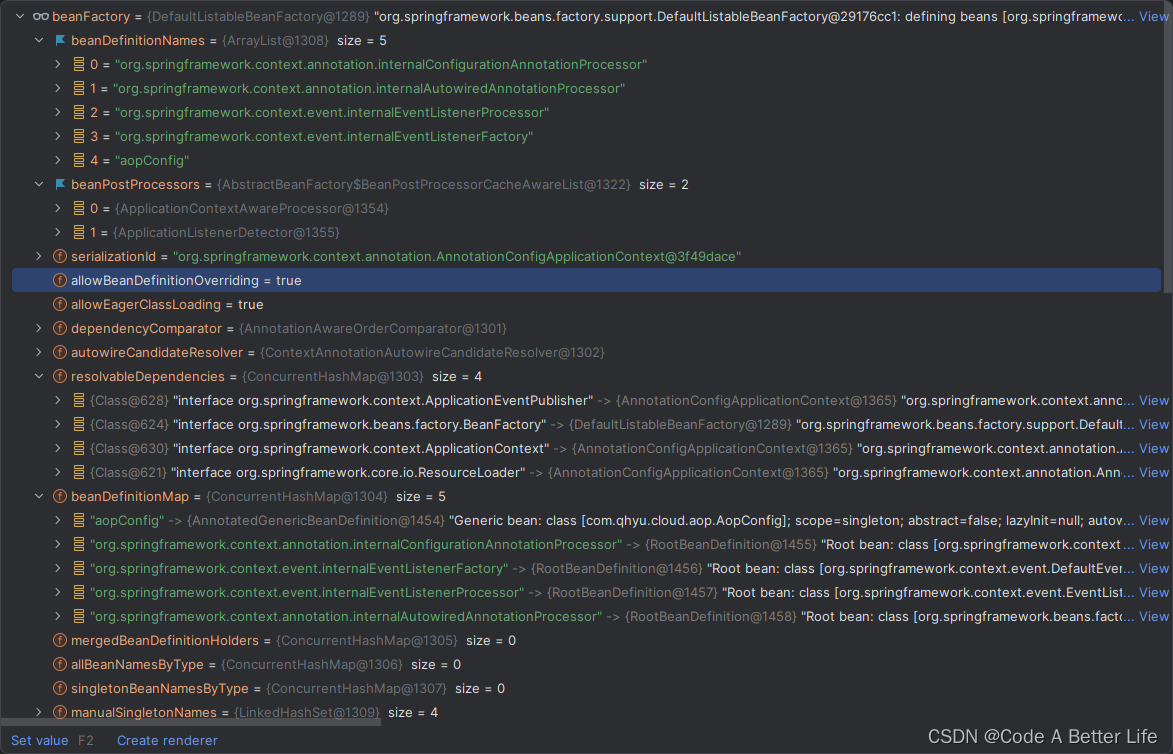
源码分析
接下来会集中拆解PostProcessorRegistrationDelegate类中的invokeBeanFactoryPostProcessors方法来逐步分析源码。
public static void invokeBeanFactoryPostProcessors(
ConfigurableListableBeanFactory beanFactory, List<BeanFactoryPostProcessor> beanFactoryPostProcessors) {
Set<String> processedBeans = new HashSet<>();
// 因为默认传的DefaultListableBeanFactory==beanFactory实现了BeanDefinitionRegistry接口,所以进入if的逻辑
if (beanFactory instanceof BeanDefinitionRegistry) {
// 也就是说这个if里面要使用的就是BeanDefinitionRegistry的特性。或者作为参数传递固定了类型。
BeanDefinitionRegistry registry = (BeanDefinitionRegistry) beanFactory;
// regular常规的意思
// regularPostProcessors记录通过硬编码方式注册的BeanFactoryPostProcessor类型的处理器
// 存放直接实现了BeanFactoryPostProcessor接口的实现类集合,bfpp的作用是可以定制化修改bd
List<BeanFactoryPostProcessor> regularPostProcessors = new ArrayList<>();
// registryProcessors记录通过硬编码方式注册是BeanDefinitionRegistryPostProcessor
// 存放直接实现了BeanDefinitionRegistryPostProcessor接口实现类的集合,brpp可以定制化修改bd
List<BeanDefinitionRegistryPostProcessor> registryProcessors = new ArrayList<>();
processedBeans根据是用来存放String的集合,根据processedBeans.add方法可以知道存放的是处理完成的BeanDefinitionRegistryPostProcessor的名称。
regularPostProcessors存放的是BeanFacotyPostProcessor。
registryProcessors存放的是BeanDefinitionRegistryPostProcessor。
接下来拆解这个for循环,beanFactoryPostProcessors参数size=0,所以当前这个for循环肯定是不会执行的。然而整个invokeBeanFactoryPostProcessors方法中只有这个for循环中有使用regularPostProcessors.add方法。所以regular相关的后续遇到了可以先跳过。
此处可以作为一个扩展点。AnnotationConfigApplicationContext.addBeanFactoryPostProcessor可以让for循环生效。也就是手动注入beanFactoryPostProcessor,在这篇文章就不深入了。
for (BeanFactoryPostProcessor postProcessor : beanFactoryPostProcessors) {
if (postProcessor instanceof BeanDefinitionRegistryPostProcessor) {
BeanDefinitionRegistryPostProcessor registryProcessor =
(BeanDefinitionRegistryPostProcessor) postProcessor;
registryProcessor.postProcessBeanDefinitionRegistry(registry);
registryProcessors.add(registryProcessor);
}
else {
regularPostProcessors.add(postProcessor);
}
}
// 用于存放当前即将执行BeanDefinitionRegistryPostProcessor实现类
List<BeanDefinitionRegistryPostProcessor> currentRegistryProcessors = new ArrayList<>();
第一次调用实现了ProrityOrdered的BeanDefinitionRegistryPostProcessors逻辑,接下来将是最重要的部分了。
// First, invoke the BeanDefinitionRegistryPostProcessors that implement PriorityOrdered.
String[] postProcessorNames =
beanFactory.getBeanNamesForType(BeanDefinitionRegistryPostProcessor.class, true, false);
for (String ppName : postProcessorNames) {
if (beanFactory.isTypeMatch(ppName, PriorityOrdered.class)) {
currentRegistryProcessors.add(beanFactory.getBean(ppName, BeanDefinitionRegistryPostProcessor.class));
processedBeans.add(ppName);
}
}
// 很明显 这里是排序,先不进去看,因为此时currentRegistryProcessors只有一个ConfigurationClassPostProcessor
sortPostProcessors(currentRegistryProcessors, beanFactory);
registryProcessors.addAll(currentRegistryProcessors);
// 这个方法就是核心内容,我这个工程使用了AOPConfig启动类,也就是说一开始会解析这个类,包含类上的ComponentScan注解,会把路径下的东西用ClassPathBeanDefinitionScanner来扫描出来
// 生成beanDefinition放入BeanFactory(DefaultListableBeanFactory),所以第二次调用的时候就可以扫描出其他的BeanFactoryPostProcessors
// ConfigurationClassPostProcessor == currentRegistryProcessors
invokeBeanDefinitionRegistryPostProcessors(currentRegistryProcessors, registry, beanFactory.getApplicationStartup());
// 清空当前注册的BeanDefinitionRegistryPostProcessors
currentRegistryProcessors.clear();
首先查看postProcessorNames会返回什么东西。

org.springframework.context.annotation.internalConfigurationAnnotationProcessor 这个有点印象。可以回到开始的beanFactory的截图中找到。beanDefinitonNames中第一个记录就是这个名称。
也就是说beanFactory.getBeanNamesForType方法是从spring的beanFactory中的beanDefinitionMap中去找有没有符合类型为BeanDefinitionRegistryPostProcessor的类,并且如果实现了PriorityOrdered.class就把这个BeanDefinitionRegistryPostProcessor加入到currentRegistryProcessors和processedBeans集合中。

beanFactory.getBean(ppName, BeanDefinitionRegistryPostProcessor.class)拿到的bean其实是ConfigurationClassPostProcessor。
解析下来就是关键先生ConfigurationClassPostProcessor类和invokeBeanDefinitionRegistryPostProcessors方法。
private static void invokeBeanDefinitionRegistryPostProcessors(
Collection<? extends BeanDefinitionRegistryPostProcessor> postProcessors, BeanDefinitionRegistry registry, ApplicationStartup applicationStartup) {
for (BeanDefinitionRegistryPostProcessor postProcessor : postProcessors) {
StartupStep postProcessBeanDefRegistry = applicationStartup.start("spring.context.beandef-registry.post-process")
.tag("postProcessor", postProcessor::toString);
postProcessor.postProcessBeanDefinitionRegistry(registry);
postProcessBeanDefRegistry.end();
}
}
根据代码来看,就是执行ConfigurationClassPostProcessor类的postProcessBeanDefinitionRegistry方法,带上了registry这个参数,也就是DefaultListableBeanFacotry。
这个invokeBeanDefinitionRegistryPostProcessors方法的意思就是调用这个BeanDefinitionRegistryPostProcessor的postProcessBeanDefinitionRegistry方法,而ConfigurationClassPostProcessor类的postProcessBeanDefinitionRegistry方法是去加载并注册我们自定义的一些被spring管理的类到spring中。在本节中不会深入的去研究这个类的具体执行逻辑,将在下一章节进行分析。
invokeBeanDefinitionRegistryPostProcessors方法执行完成之后会清理currentRegistryProcessors集合。然后就开始第二次调用了。
postProcessorNames = beanFactory.getBeanNamesForType(BeanDefinitionRegistryPostProcessor.class, true, false);
for (String ppName : postProcessorNames) {
if (!processedBeans.contains(ppName) && beanFactory.isTypeMatch(ppName, Ordered.class)) {
currentRegistryProcessors.add(beanFactory.getBean(ppName, BeanDefinitionRegistryPostProcessor.class));
processedBeans.add(ppName);
}
}
sortPostProcessors(currentRegistryProcessors, beanFactory);
registryProcessors.addAll(currentRegistryProcessors);
invokeBeanDefinitionRegistryPostProcessors(currentRegistryProcessors, registry, beanFactory.getApplicationStartup());
currentRegistryProcessors.clear();
其实第二次调用的这块代码和第一次调用的大差不差,主要是beanFactory.isTypeMatch(ppName, Ordered.class)的不同,第一次是PriorityOrdered.class。同时第二次不会处理第一次执行过的BeanFacotryPostProcessor。也就是processedBeans.contains(ppName)逻辑。

第二次调用beanFactory.getBeanNamesForType(BeanDefinitionRegistryPostProcessor.class, true, false)除了第一次出现的org.springframework.context.annotation.internalConfigurationAnnotationProcessor还有两个我自定义的类。
@Component
public class CloudBeanDefinitionRegistryPostProcessor implements BeanDefinitionRegistryPostProcessor , PriorityOrdered {
@Override
public void postProcessBeanFactory(ConfigurableListableBeanFactory beanFactory) throws BeansException {
System.out.println("beanFactoryPostProcessor used by cloud");
}
@Override
public void postProcessBeanDefinitionRegistry(BeanDefinitionRegistry registry) throws BeansException {
System.out.println("BeanDefinitionRegistryPostProcessor used by cloud");
}
@Override
public int getOrder() {
return 100;
}
}
因为第一次调用的时候执行了ConfigurationClassPostProcessor类的postProcessBeanDefinitionRegistry方法,会把我们交给spring管理的beanDefinition注册到beanFactory中,所以第二次调用这个方法的时候就会把自定义的加载起来,当然三方jar包也可能做同样的事情,比如mybatis plus。
invokeBeanDefinitionRegistryPostProcessors方法还是会执行这些自定的BeanDefinitionRegistryPostProcessor的postProcessBeanDefinitionRegistry方法。执行完成之后继续清理currentRegistryProcessors集合。
接下来开始调用第三次,为什么会出现第三次,就是因为 beanFactory.isTypeMatch(ppName, Ordered.class)和beanFactory.isTypeMatch(ppName, PriorityOrdered.class),相当于自定义的没有实现这两个接口的就在这里一次性处理完。
boolean reiterate = true;
while (reiterate) {
reiterate = false;
postProcessorNames = beanFactory.getBeanNamesForType(BeanDefinitionRegistryPostProcessor.class, true, false);
for (String ppName : postProcessorNames) {
if (!processedBeans.contains(ppName)) {
currentRegistryProcessors.add(beanFactory.getBean(ppName, BeanDefinitionRegistryPostProcessor.class));
processedBeans.add(ppName);
reiterate = true;
}
}
sortPostProcessors(currentRegistryProcessors, beanFactory);
registryProcessors.addAll(currentRegistryProcessors);
invokeBeanDefinitionRegistryPostProcessors(currentRegistryProcessors, registry, beanFactory.getApplicationStartup());
currentRegistryProcessors.clear();
}
在if方法的最后有两行代码比较重要。
// Now, invoke the postProcessBeanFactory callback of all processors handled so far.
invokeBeanFactoryPostProcessors(registryProcessors, beanFactory);
invokeBeanFactoryPostProcessors(regularPostProcessors, beanFactory);
其实重要的就是这个方法,调用BeanFacotyPostProcessors的postProcessBeanFactory方法。也就是说自定义的这些BeanDefinitionRegistryPostProcessor会先执行BeanDefinitionRegistryPostProcessor的postProcessBeanDefinitionRegistry方法,待所有的BeanDefinitionRegistryPostProcessor执行完成之后再调用这些自定义的BeanDefinitionRegistryPostProcessor的postProcessBeanFactory方法。因为双方存在继承关系。
至此BeanDefinitionRegistryPostProcessor就结束了,接下来就会处理BeanFactoryPostProcessor了。
// Do not initialize FactoryBeans here: We need to leave all regular beans
// uninitialized to let the bean factory post-processors apply to them!
String[] postProcessorNames =
beanFactory.getBeanNamesForType(BeanFactoryPostProcessor.class, true, false);
// Separate between BeanFactoryPostProcessors that implement PriorityOrdered,
// Ordered, and the rest.
List<BeanFactoryPostProcessor> priorityOrderedPostProcessors = new ArrayList<>();
List<String> orderedPostProcessorNames = new ArrayList<>();
List<String> nonOrderedPostProcessorNames = new ArrayList<>();
**postProcessorNames:**获取的是当前beanFactory中的实现了BeanFactoryPostProcessor的bean的名称。
**priorityOrderedPostProcessors:**很明显哈实现了PriorityOrdered的BeanFactoryPostProcessor存放在这,存放的是bean哦。
**orderedPostProcessorNames:**存放的是实现了Ordered的BeanFactoryPostProcessor,存放的是名称。
**nonOrderedPostProcessorNames:**存放的是没有实现排序的BeanFactoryPostProcessor,存放的是名称。
for (String ppName : postProcessorNames) {
if (processedBeans.contains(ppName)) {
// skip - already processed in first phase above
}
else if (beanFactory.isTypeMatch(ppName, PriorityOrdered.class)) {
priorityOrderedPostProcessors.add(beanFactory.getBean(ppName, BeanFactoryPostProcessor.class));
}
else if (beanFactory.isTypeMatch(ppName, Ordered.class)) {
orderedPostProcessorNames.add(ppName);
}
else {
nonOrderedPostProcessorNames.add(ppName);
}
}
接下来就是排序和invokeBeanFactoryPostProcessors,分别执行这几个集合中的BeanFactoryPostProcessor的postProcessBeanFactory方法。
总结
本章主要分析了AbstractApplicationContext.refresh方法中的invokeBeanFactoryPostProcessors(beanFactory)方法,其中ConfigurationClassPostProcessor类的postProcessBeanDefinitionRegistry方法和排序方法将在下一章进行分析和讲解,循序渐进的完成整个逻辑的讲解。
